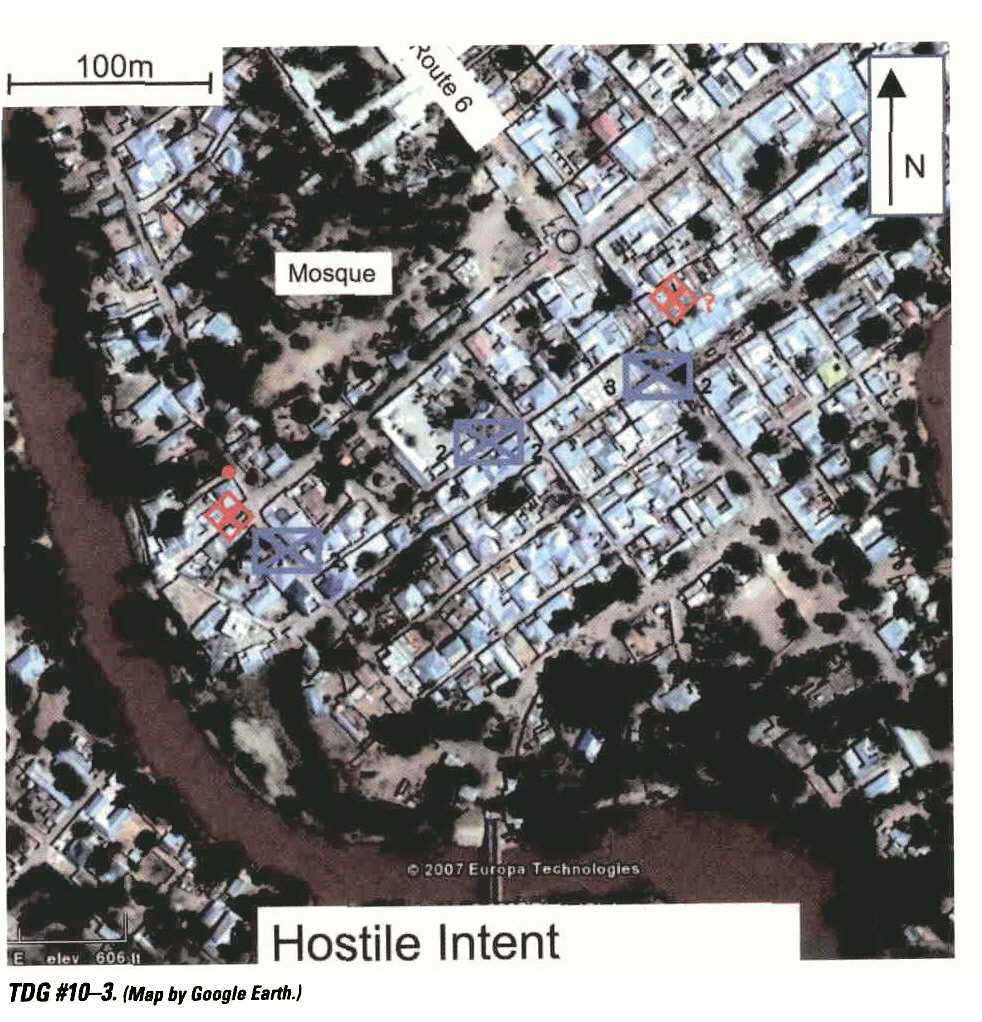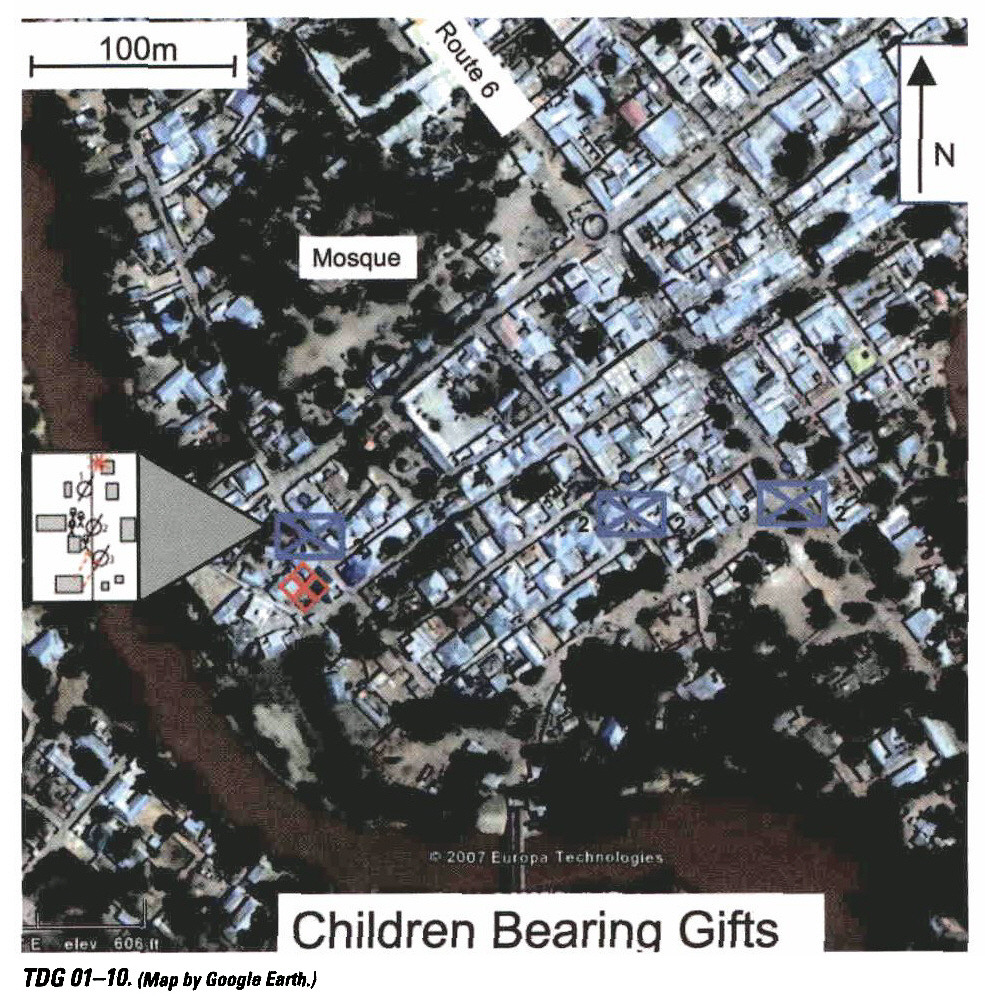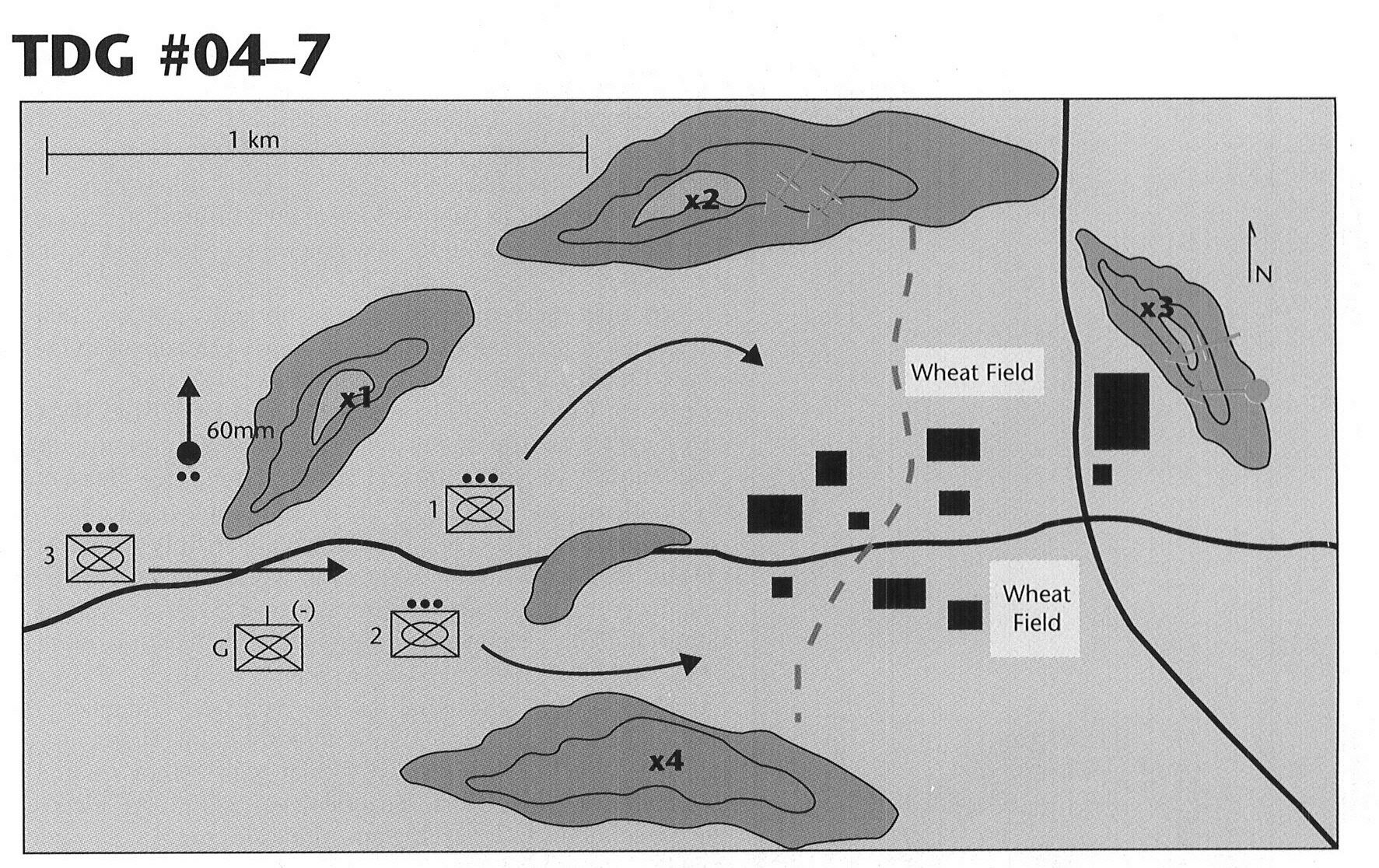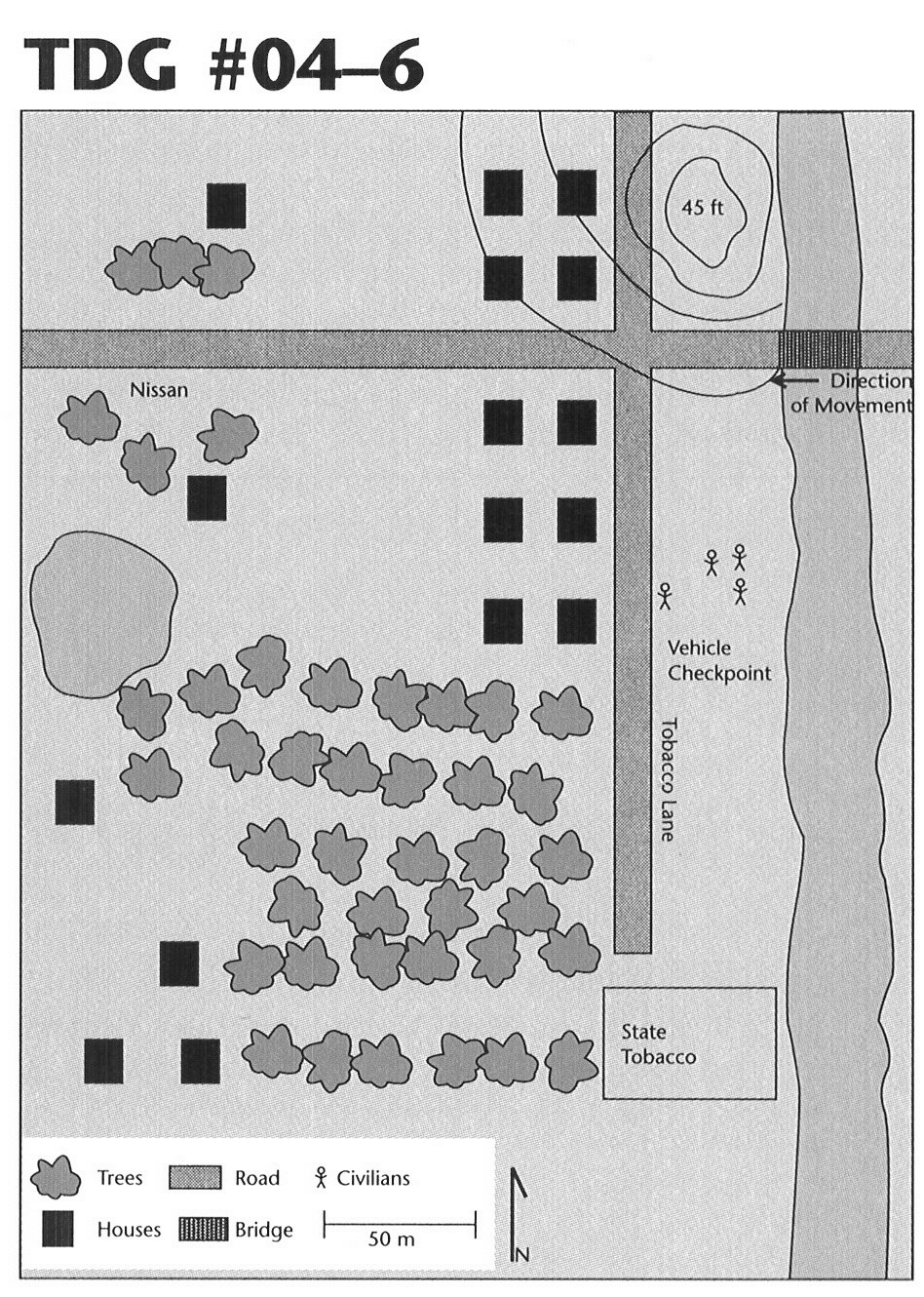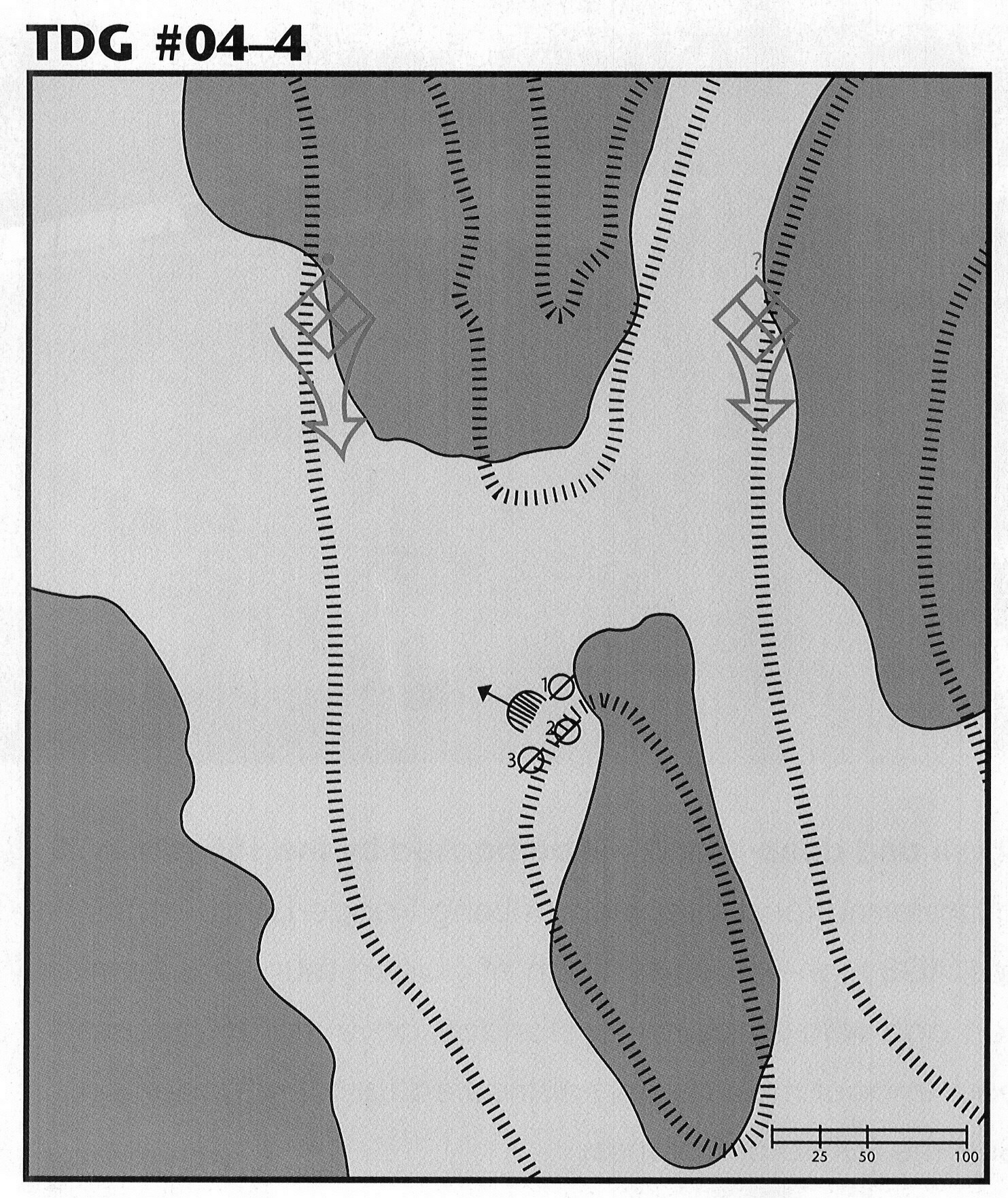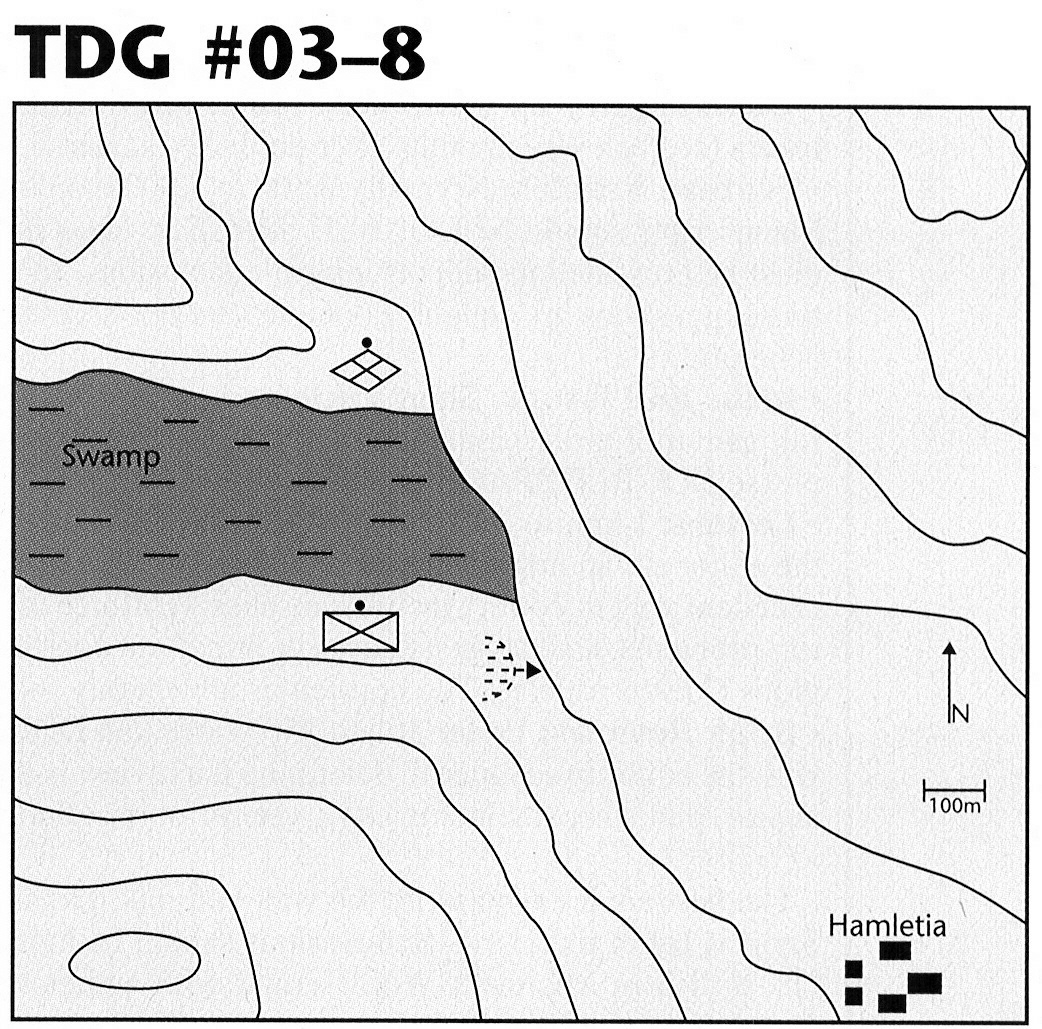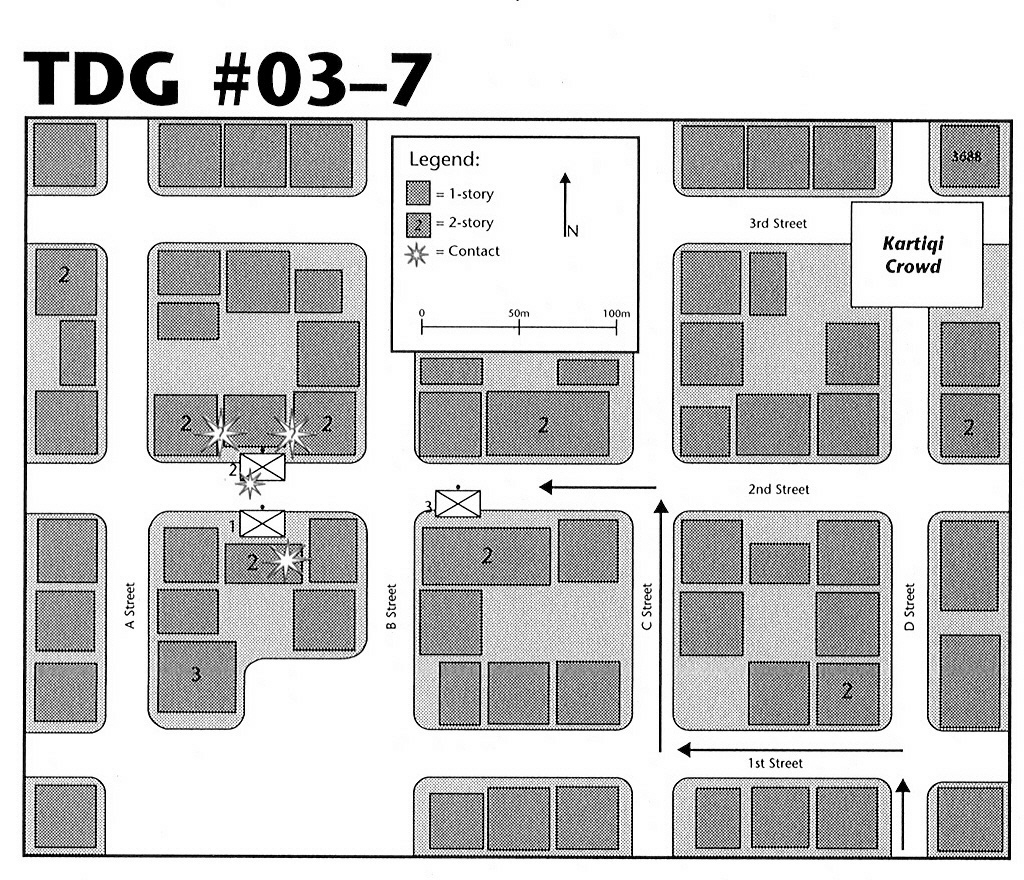by Capt Jason Topshe
Situation
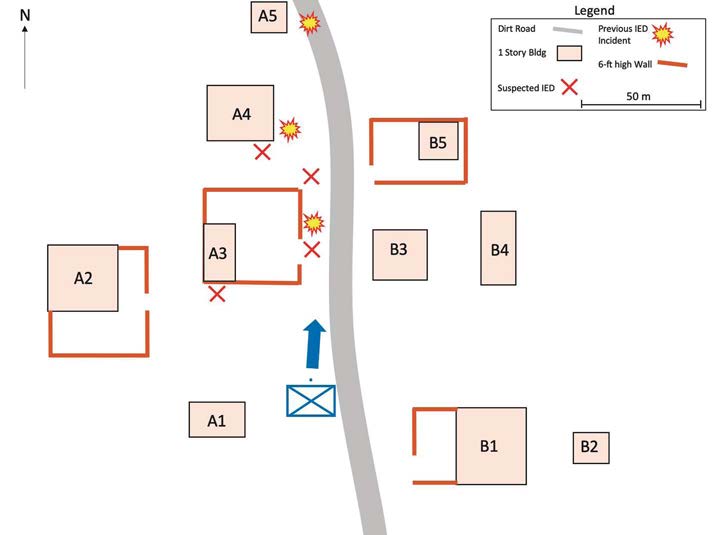
You are 3d Squad Leader, 1st Platoon, Company B, 1st Battalion, 1st Marines, deployed to Farah Province, Afghanistan. Your squad was tasked with finding and destroying a suspected Taliban weapons cache reported to be located somewhere in the village of Wadi Zai.
The last reported activity involving U.S. forces in the area is from an Army patrol which conducted a route clearance mission almost seven months ago. That patrol identified a possible IED on the road in vicinity of Building A5. However, when they dismounted their vehicles to investigate, one soldier stepped on a pressure plate IED located near the southeast corner of Building A4. A second soldier moved to provide first aid, but he also stepped on a pressure plate IED along the eastern wall of Building A3. In the ensuing minutes, both of them died of their injuries. The possible IED in vicinity of Building A5 was later confirmed and rendered safe.
During mission planning, through the use of sensors provided by unmanned aerial systems, and through reliable reports from intelligence sources, you have identified four possible IED locations in the village. These are marked by a red “X” on the map.
The remainder of your platoon is located 2km south at Forward Operating Base Driftwood. As your squad patrols into the village from the South, your Platoon Commander comes over the radio with the following information: “Intel reports indicate a high probability the enemy weapons cache is located in Building A3. Get there ASAP and search that building.”
As you approach Building A3 on foot from the south, you notice disturbed earth in three locations surrounding the building, specifically in locations that you identified as likely IEDs during mission planning. Your interpreter is also talking to a local man who claims to live in Building B1. He nervously tells you that you should not go in there because the entire compound is filled with “bombs.”
You report the situation back to your Platoon Commander and request explosive ordnance disposal (EOD) support to further investigate and render any IEDs safe before entering the compound. He comes on the radio with this reply: “Negative. EOD currently unavailable. Find another way to get into that compound. You need to find that cache.”
The compound walls are about six-feet high, and you know your Marines can scale them with the help of a buddy. Through your interpreter, you ask the local man if he knows of a safe way to get into the compound while avoiding IEDs, but he says that he is not sure. He adds that the Taliban used to use the building, but they do not go in it anymore because they forgot where the “bombs” are. After you spend a few minutes talking with the local man, your Platoon Commander comes over the radio and says the following: “Quit delaying. Search that building or I’ll put someone else in charge of your squad who will.”
Troops and Fire Support Available
- (1)Rifle Squad with (15) Marines
- (1)Interpreter
- 155mm howitzer battery located 5km west
- Squad-sized QRF with (4) MRAPs located 2km South at FOB Driftwood.
Requirements
- How do you respond to your Platoon Commander?
- In three minutes or less, develop a plan and give orders to your squad.
Considerations
What are the potential risks and benefits associated with obeying your Platoon Commander’s order to search the building? What are the potential risks and benefits of disobeying him?
T&R ITS Links
- INF-ASLT-4003: Conduct a breach (T&R pg 7-10)
- INF-FSPT-4001: Integrate fires (pg. 7-11)
- INF-INT-4001: Conduct Tactical Site Exploitation (TSE) (pg. 7-12)
- INF-MAN-4213: Conduct a cordon and search (pg. 7-31)
- INF-MAN-4301: Conduct a combat patrol (pg. 7-32)
- 0300-PAT-2007: Lead a unit in reaction to a detonated Improvised Explosive Device (IED) (pg. 8-82)
- 0300-PAT-2008: Lead a unit in reaction to a undetonated Improvised Explosive Device (IED) (pg. 8-83)
- 0311-MOUT-1003: Execute lower-level entry (pg. 11-15)
- 0311-MOUT-2001: Lead a squad in urban operations (pg. 11-36)
- 0311-OFF-2002: Lead a squad in offensive operations (pg. 11-38)
- 0311-OFF-2005: Direct the employment of an assault team in offensive operations (pg. 11-41)


